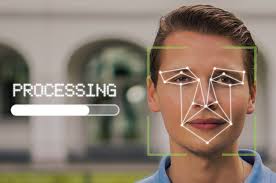Between Security and Surveillance
Introduction
In an increasingly digital world, the concept of digital identity (ID) systems has garnered significant attention from governments, businesses, and civil society alike. Digital IDs are essentially electronic versions of official identification documents and can include biometric data, unique identifiers, and cryptographic security measures. As nations grapple with complex challenges associated with immigration, the implementation of digital ID systems has been proposed as a tool to bolster immigration controls, enhance border security, and streamline administrative processes. However, the intersection of digital identification and immigration control is fraught with ethical, practical, and political concerns.
At the same time, a critical public discourse has emerged around the failure of successive governments to adequately secure borders, particularly in the face of a rising number of migrants arriving via unregulated channels, such as small boats. This repeated failure has led to suspicions that governments may be using immigration crises as a pretext for increasing state surveillance through digital ID systems. Are these efforts genuinely aimed at improving national security and immigration management, or are they tools for expanding control over the general population? This article explores the convergence of these issues, examining the benefits and drawbacks of digital IDs in the context of immigration while considering the political motivations behind their rise.
A Pattern of Failure in Border Control
For decades, governments across the political spectrum have promised to curb illegal immigration and secure national borders. Yet, images of overcrowded small boats crossing treacherous seas continue to dominate headlines. Critics argue that successive administrations have not only failed to tackle the issue effectively but may also be using it to justify sweeping policy shifts, including the introduction of digital ID systems that could reshape civil liberties.
From high-profile pledges to “take back control” to aggressive rhetoric targeting “illegal migration,” the political narrative has often outpaced practical results. Border forces are frequently under-resourced, asylum processing systems are bogged down, and diplomatic agreements to return migrants are limited in scope or effectiveness. These systemic issues have persisted through both conservative and progressive administrations, raising questions about whether governments lack the will, the competence, or both.
The Promise of Digital IDs in Combating Illegal Immigration
Enhanced Identity Verification
Digital IDs offer secure, tamper-resistant methods of identity verification. Traditional paper-based documents can be forged or stolen, making them unreliable in immigration enforcement. Digital IDs, especially those incorporating biometric data (fingerprints, iris scans, facial recognition), provide a higher level of assurance in verifying an individual’s identity.
Streamlined Border Control
Digital IDs can streamline border control processes, enabling faster and more accurate checks at entry and exit points. Automated systems that verify digital IDs against national and international databases can reduce human error and minimize the time required to process travellers, helping authorities identify undocumented migrants or individuals using fraudulent documentation.
Integration with Other Systems
Digital IDs can be integrated with other governmental and intergovernmental databases, such as employment records, health services, and law enforcement databases. This interconnectivity allows for real-time information sharing, making it easier to detect and deter illegal immigration activities, such as working without authorization or overstaying visas.
Improved Resource Allocation
With more accurate data on who resides within a country legally, governments can allocate resources more effectively. Services like housing, healthcare, and education can be better managed when illegal immigration is curbed through digital ID monitoring.
Support for Legal Migrants
By distinguishing clearly between legal and illegal migrants, digital ID systems can improve service provision for those with legal status. Migrants who have followed legal channels may find it easier to access public services, open bank accounts, or find housing when their digital identities verify their status instantly.
Motivations: Control or Compassion?
In parallel with these border failures, many governments are now advancing digital ID schemes. These systems, often presented as necessary for modern governance and national security, are pitched as tools to track residency, manage immigration, and distinguish between legal and illegal presence. Proponents argue this digital infrastructure is essential for efficiency and enforcement in the 21st century.
Yet sceptics point to a more troubling possibility: that migration crises are being leveraged to introduce greater surveillance under the guise of national security. With digital IDs, governments can potentially monitor citizen behaviour far beyond immigration — from employment to healthcare access, financial transactions, and beyond.
The central tension in using digital IDs for immigration control lies in balancing security concerns with the protection of individual rights. While governments have a legitimate interest in managing borders and immigration flows, these goals must not come at the expense of civil liberties.
Challenges and Risks of Digital IDs in Immigration Control
Privacy and Data Security
The implementation of digital IDs raises significant privacy concerns. Centralised databases that store biometric and personal information are attractive targets for cyberattacks. If such systems are breached, individuals’ sensitive data could be misused, leading to identity theft or surveillance abuses.
Exclusion and Discrimination
Digital ID systems risk excluding vulnerable populations, particularly those without access to the necessary technology or documentation to register. Marginalised groups, including refugees and stateless individuals, may face discrimination or be unfairly targeted, exacerbating social inequalities.
Potential for Authoritarian Abuse
In countries with weak rule of law or authoritarian tendencies, digital IDs can become tools for surveillance and control. Governments might use these systems to track dissidents, monitor movements, or suppress minority groups under the guise of immigration control.
High Implementation Costs
Developing and maintaining digital ID infrastructure is expensive. Countries must invest in secure technology, train personnel, and continuously update systems. For developing nations, these costs can be prohibitive, raising questions about the equitable implementation of such measures.
Interoperability and International Coordination
Effective use of digital IDs in immigration control requires cooperation between countries. However, differing legal standards, technological capabilities, and political will can hinder the establishment of interoperable systems, reducing the effectiveness of digital IDs in a global context.
Legal and Ethical Considerations
The deployment of digital IDs must align with international human rights norms, including the right to privacy, freedom of movement, and protection against discrimination. Legal safeguards must be in place to ensure data is collected, stored, and used transparently and responsibly. Additionally, consent and recourse mechanisms should be integral parts of any digital ID system.
Case Studies
India’s Aadhaar System
India’s Aadhaar is the world’s largest biometric ID system, covering over a billion people. Though not initially designed for immigration control, it has been cited as a model for identity verification. However, critics point to data breaches and exclusion issues that have impacted marginalised communities.
Estonia’s e-Residency Program
Estonia has pioneered digital governance with its e-Residency program, providing a secure digital identity for global entrepreneurs. While not focused on immigration, its model demonstrates how secure digital infrastructure can enable efficient governance and inspire confidence in digital systems.
European Union Entry/Exit System (EES)
The EU’s EES aims to modernize border management through biometric data collection and automated border control gates. It represents a concerted effort to digitise immigration control while maintaining data protection standards.
Recommendations for Responsible Implementation
Adopt a Rights-Based Approach
Digital ID systems must be designed with a strong emphasis on human rights. This includes ensuring informed consent, protecting data privacy, and providing access to legal recourse for individuals affected by ID-related decisions.
Inclusive Design and Implementation
Governments should engage with civil society, migrant communities, and technical experts to design systems that are inclusive and accessible. Special attention should be paid to the needs of individuals who may lack digital literacy or official documentation.
Robust Legal Frameworks
Strong data protection laws and independent oversight bodies are essential to ensure accountability. Legal frameworks must define the scope and limitations of digital ID usage, especially in relation to immigration enforcement.
International Cooperation
Countries should collaborate on setting global standards for digital identity, including interoperability, data sharing protocols, and human rights safeguards. International organizations can play a key role in facilitating dialogue and providing technical support.
Regular Audits and Transparency
Ongoing monitoring, independent audits, and transparency reports can help build public trust in digital ID systems. Governments should publish data on system performance, breaches, and corrective actions taken.
Conclusion
Digital IDs offer a powerful tool in the fight against illegal immigration, with the potential to enhance identity verification, streamline border processes, and integrate with broader governance systems. However, their use must be carefully managed to avoid infringing on individual rights or exacerbating existing inequalities. As the global community continues to navigate the challenges of migration and digital governance, a balanced, inclusive, and rights-focused approach to digital ID implementation will be crucial. Only then can these technologies serve both the security interests of states and the dignity and rights of individuals.






